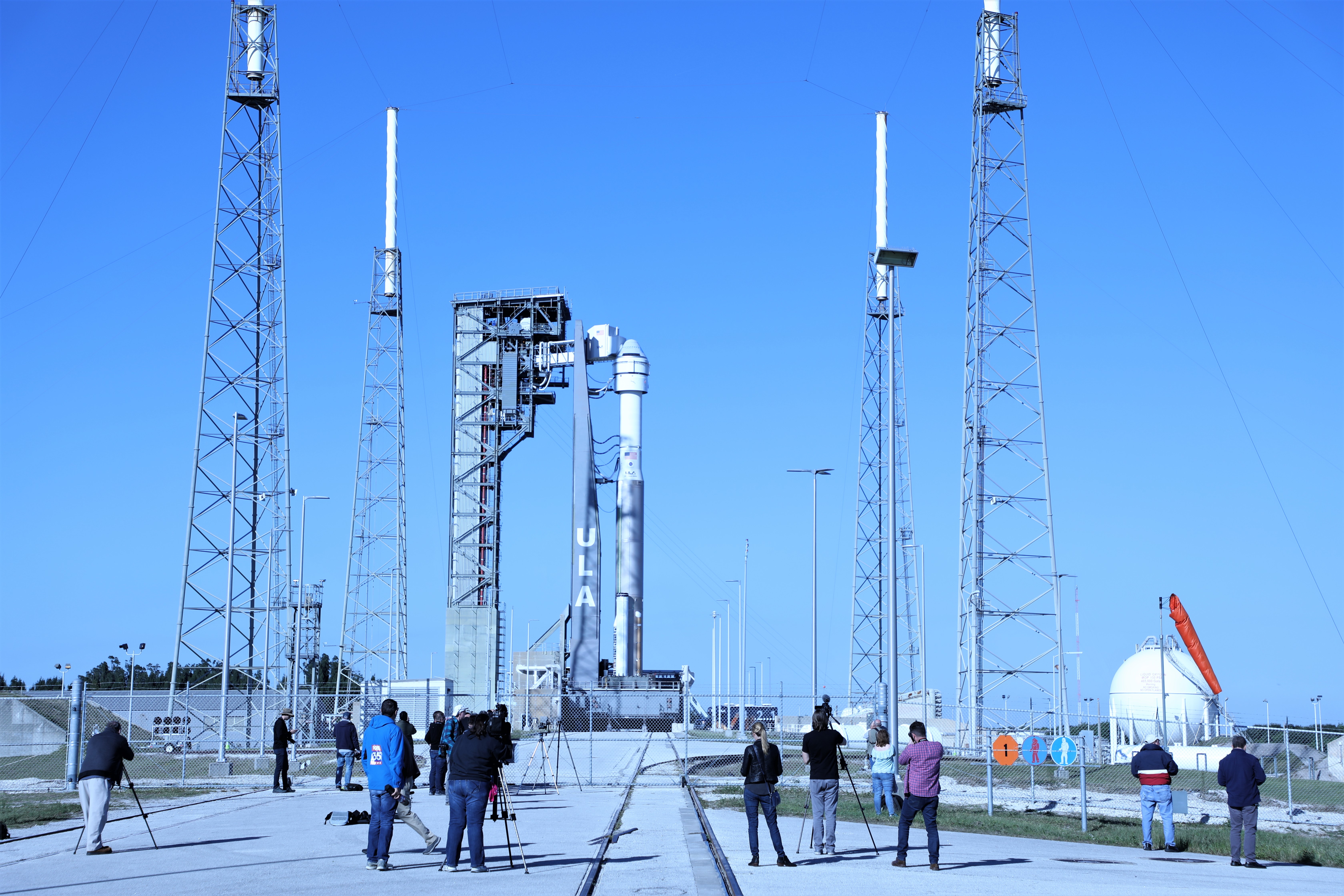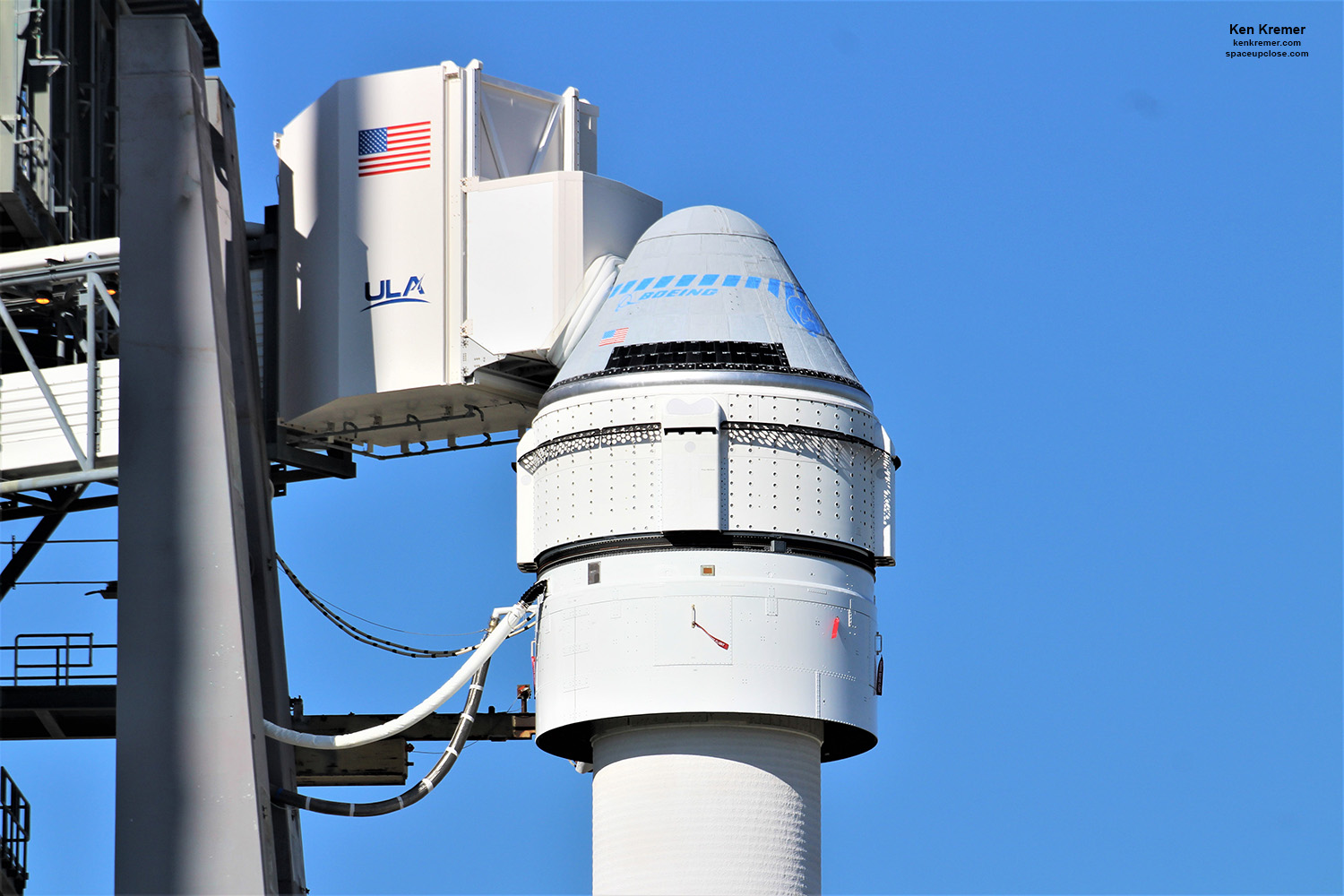
For SpaceUpClose.com & RocketSTEM
KENNEDY SPACE CENTER/CAPE CANAVERAL AIR FORCE STATION, FL – The combined NASA, Boeing, ULA team unanimously approved Dec. 20 as the date for liftoff of the history making 1st commercial Starliner test flight to the International Space Station from the Florida Space Coast – giving the “GO” after a “thorough and comprehensive” review of the human-rated spaceships readiness for the critical uncrewed Orbital Flight Test (OFT) demonstration journey to space that will pave the way to human missions with NASA astronauts by mid-2020, if all goes well.
The decision to proceed with plans for blastoff next week of Boeing’s Orbital Flight Test (OFT) mission was made following a full day of briefings and discussions at the Flight Readiness Review by NASA, Boeing and ULA that took place at the Operations Support Building 2 (OSB-2) nearby the iconic VAB at the agency’s Kennedy Space Center in Florida on Thursday, Dec 12.
“I’m happy to announce we’re go for launch of the Orbutal Flight Test mission on Dec. 20,” NASA Deputy Administrator Jim Morhard announced at a media teleconference shortly after the Dec. 12 review ended. “This is a historic time for the flight test of a new space system.”
The first fully integrated United Launch Alliance (ULA) Atlas V rocket and Boeing Starliner astronaut space taxi are now in the final stages of pre-launch preparations at Cape Canaveral from Launch Pad 40 on Friday, Dec 20.
Launch of the CST-100 Starliner spacecraft atop a United Launch Alliance Atlas V rocket is scheduled for 6:36 a.m. EST (1136 GMT) Friday, Dec. 20, from Space Launch Complex 41 on Cape Canaveral Air Force Station – roughly the moment Earth’s rotation brings Cape Canaveral Launch Complex 41 under the space station’s orbital plane.
The launch window is instantaneous.
The uncrewed OFT flight test will be Starliner’s maiden mission to the International Space Station for NASA’s Commercial Crew Program.
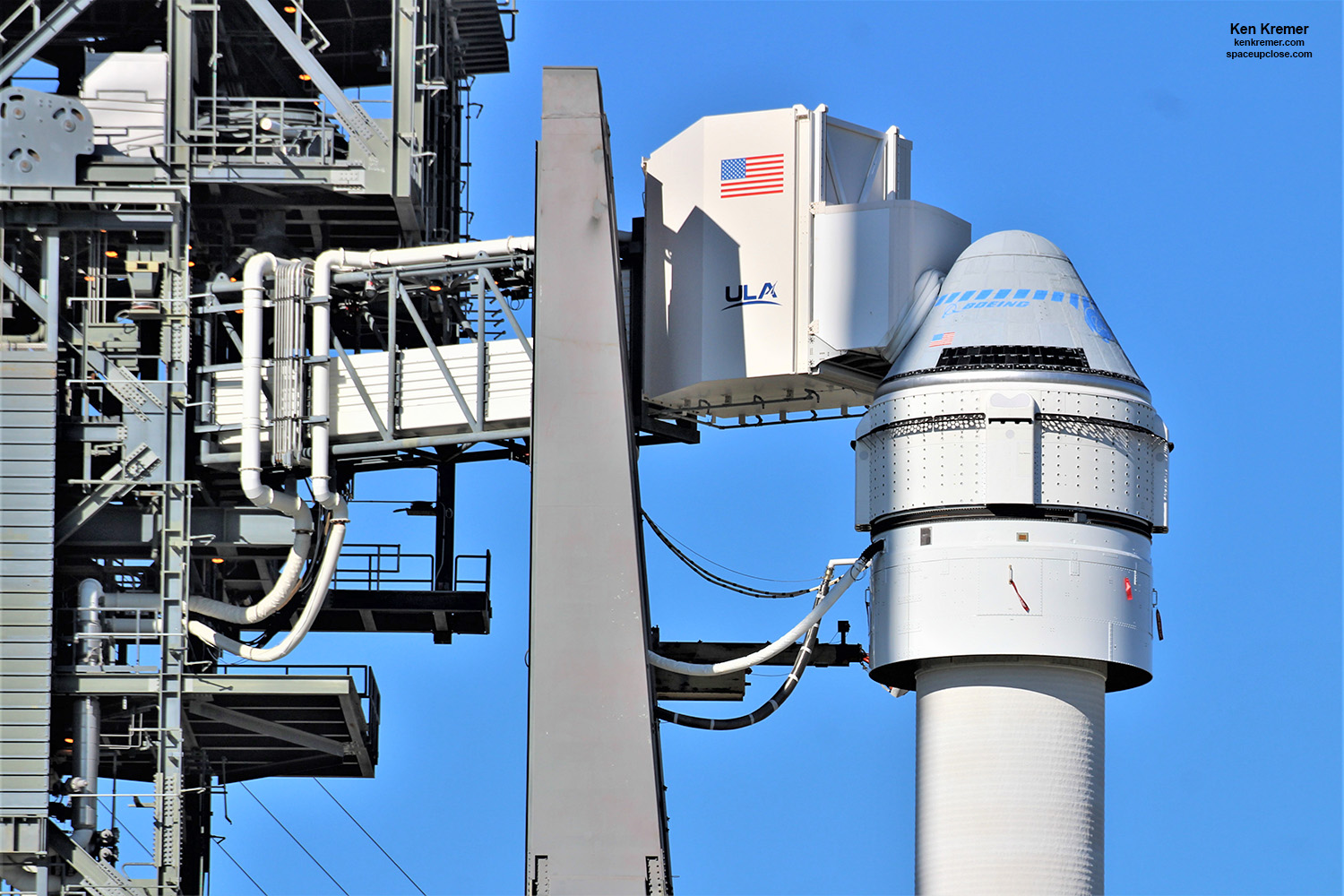
The Flight Readiness Review (FRR) and launch readiness poll was led by Ken Bowersox, deputy associate administrator for Human Exploration and Operations at NASA Headquarters, Washington, D.C.
.@NASA and @BoeingSpace are proceeding with plans for Boeing’s Orbital Flight Test following the Flight Readiness Review.
Launch of the CST-100 #Starliner spacecraft atop a @ULALaunch #AtlasV rocket remains scheduled for Dec. 20 at 6:36 a.m. ET. https://t.co/7MJBd4Wyj1 pic.twitter.com/BdOWAQOgcE
— NASA Commercial Crew (@Commercial_Crew) December 12, 2019
At the FRR teams across NASA and Boeing gave presentations and made an in-depth assessment on the readiness of flight for Boeing’s CST-100 Starliner spacecraft and systems, mission operations, support functions and readiness of the space station program to support Starliner’s maiden mission to the ISS.
“We are eager to see this mission fly,” said Phil McAlister, director, NASA Commercial Spaceflight Development, at the media telecon. “We are go for launch for the Orbital Flight Test next Friday, Dec. 20.”
There are still some open items that could possibly delay the launch but the NASA contractor team expects to be ready on time at this time.
“There’s still some standard open work to complete, and a couple of technical issues we have to close out, so we could move off the 20th. But right now, the 20th is looking good,” McAlister elaborated.
Final late stow items will be placed aboard Starliner on Sat. Dec. 14, rollout to the pad is planned for Dec. 14, said John Mulholland, vice president and program manager, Boeing Commercial Crew Program.
A final data load set that NASA must verify will also be loaded onboard Starliner computers on Dec. 14.
“Part of our requirements was to provide that dataset to the International Space Station program, Mulholland said. “They are almost complete with that review, but they are conducting a thorough review of that to make sure that they’re satisfied with the thoroughness of our build.”
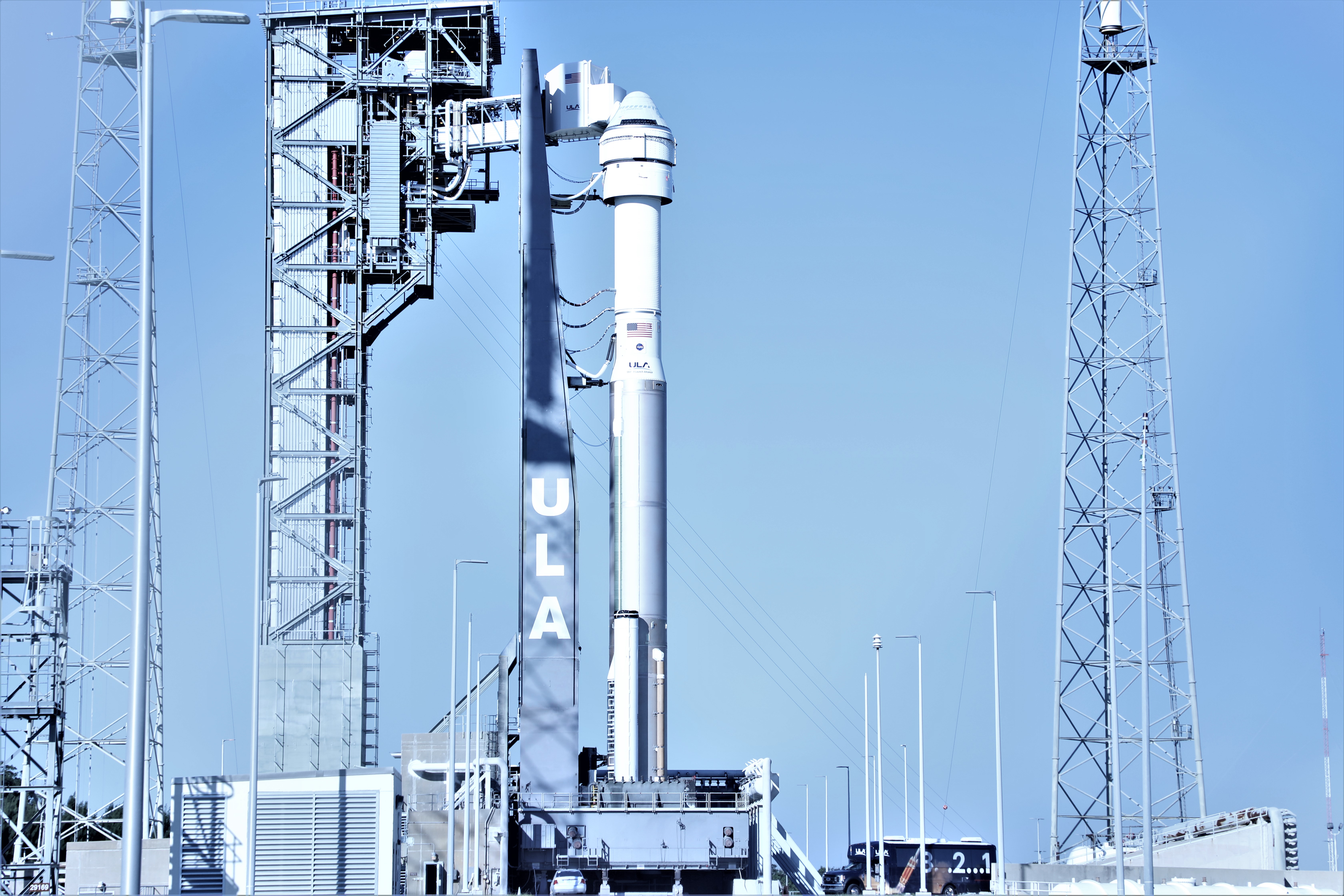
If Starliner launches on Friday, Dec. 20 it will reach its preliminary orbit about 31 minutes after launch and arrive a day later at the ISS for an automated rendezvous and docking at the Harmony Module on Dec. 21 at approximately 8:08 a.m. EST (1308 GMT) Saturday, Dec. 21.
Hatch opening by the Expedition 61 crew is targeted for 10:45 a.m. EST. They will enter to celebrate the historic milestone and retrieve some supplies and special items including Christmas and holiday presents.
Back up launch days are available on Dec. 21 and Dec. 23 and then on Christmas and after from Dec. 25 to Dec, 28 if needed for any delays due to weather or technical issues, said McAlister.
“Together, NASA and Boeing are ready to demonstrate the capabilities of the CST-100 Starliner spacecraft on top of a human-rated Atlas 5 rocket,” said Morhard. “This is the first flight test to the International Space Station of this new crew-capable system.”
The mission will last about 8 days as planned now.
Departure from the ISS is planned for Sat. Dec 28 at approximately 12:44 a.m. EST with a deorbit burn at 5:01 a.m. EST.
Parachute assisted soft landing at White Sands Space Harbor, New Mexico, is set for a few hours later after departing the ISS at night at 5:47 a.m. EST.
“Mainly, the focus of this flight is to prove out the spacecraft’s ability to get to the International Space Station and dock safely, transfer the cargo, and then safely return back to White Sands,” Mulholland said.
The Atlas V rocket that will carry Starliner to orbit comprises a ULA built 1st stage booster powered by a Russian-made RD-180 main engine, a dual-engine Centaur upper stage, as well as a pair of Aerojet Rocketdyne AJ-60 strap-on first stage solid rocket boosters.
The Atlas 5’s Russian-made RD-180 main engine and two Aerojet Rocketdyne solid rocket boosters will power the launcher off the pad. A dual-engine Centaur upper stage will power the Starliner into space and deploy the capsule on a preliminary suborbital trajectory. The capsule’s own thrusters will fire about a half-hour after liftoff to reach a stable orbit and begin its pursuit of the station.
This marks a new configuration for the Atlas V designated as “N22” because these is no payload fairing surrounding the Starliner and includes the dual engine Centuar upper stage with two Aerojet Rocketdyne RL10A-4-2 engines and two strap-on boosters.
With Starliner the completely Atlas V rocket stack stands 172 feet (52.4 meters) tall and will weigh 979,223 pounds when fully fueled for liftoff.
The ULA Atlas V rocket generates about 1.6 million pounds of liftoff thrust at launch and enjoys a 100% success record since 2002.
Details about the Atlas V and the ULA launch blog can be found here:
LAUNCH ALERT! #AtlasV will be launching the @BoeingSpace #Starliner Orbital Flight Test next Friday, Dec. 20 from Cape Canaveral, Florida. The instantaneous launch window is 6:36amEST (1136 UTC). Follow the action live on our blog: https://t.co/1zR8ToeFl6 pic.twitter.com/4K8jI7TEsA
— ULA (@ulalaunch) December 13, 2019
This first flightworthy Boeing Starliner commercial crew astronaut ferry spacecraft was just rolled out two weeks ago on Thursday, Nov. 21 from its final assembly site at the Commercial Crew and Cargo Processing Facility (C3PF) at NASA’s Kennedy Space Center in Florida to its launch pad at Space Launch Complex 41.
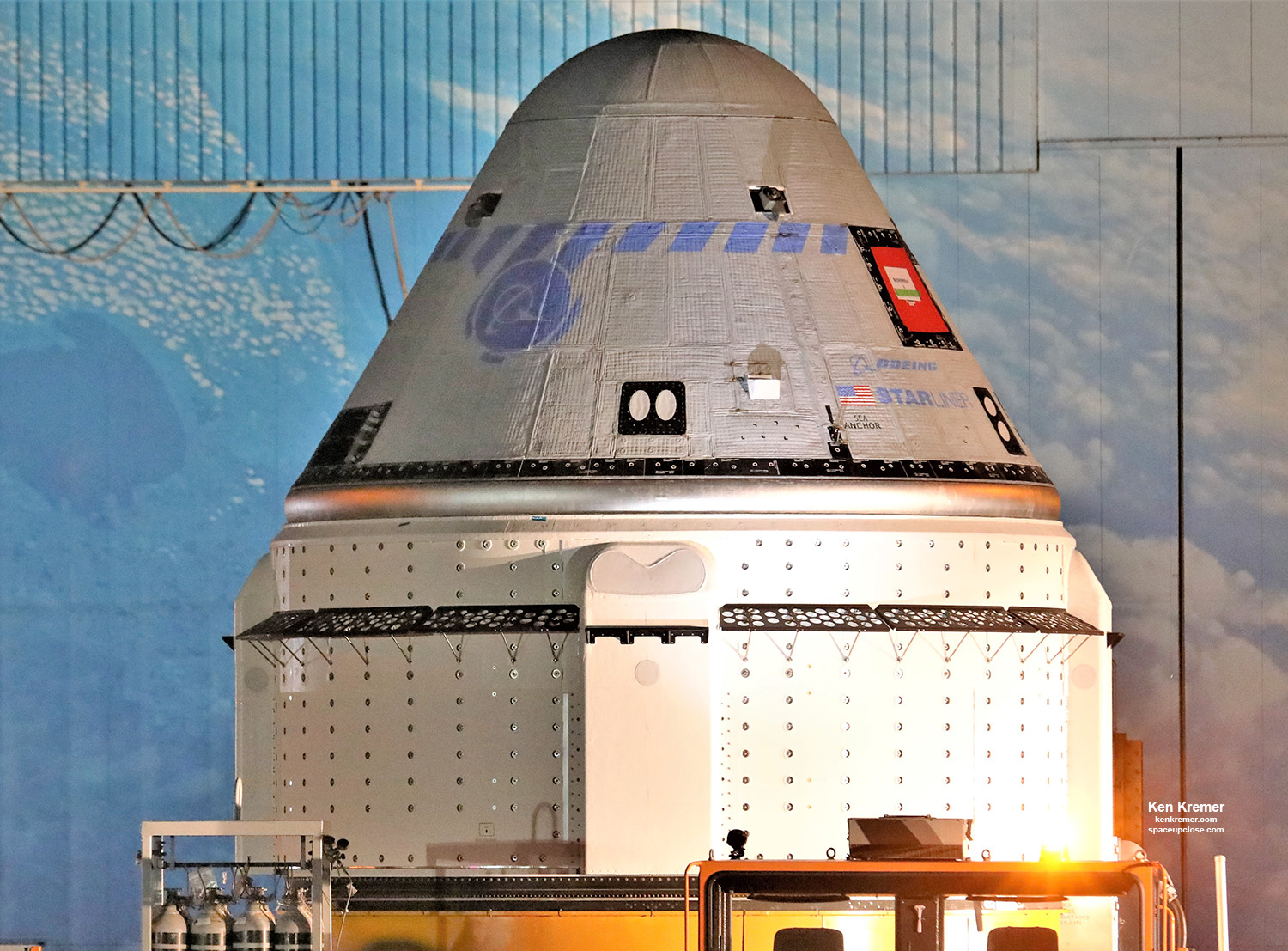
Check out my Space UpClose eyewitness articles and photos of the Starliner rollout.
If all goes well with the week-long OFT mission it will fully demonstrate Starliner and Atlas V’s ability to safely carry crew to and from the orbiting laboratory and pave the path to the inaugural crewed liftoff on the Crew Flight Test (CFT) mission launching as soon as early 2020.
At the briefing no one was willing to illuminate a target launch date for CFT – wanting to see the outcome and results of OFT first.
Mulholland told Space UpClose the analysis should not take too long. Perhaps a few weeks. But the capsule also needs to undergo final assembly and checkouts.
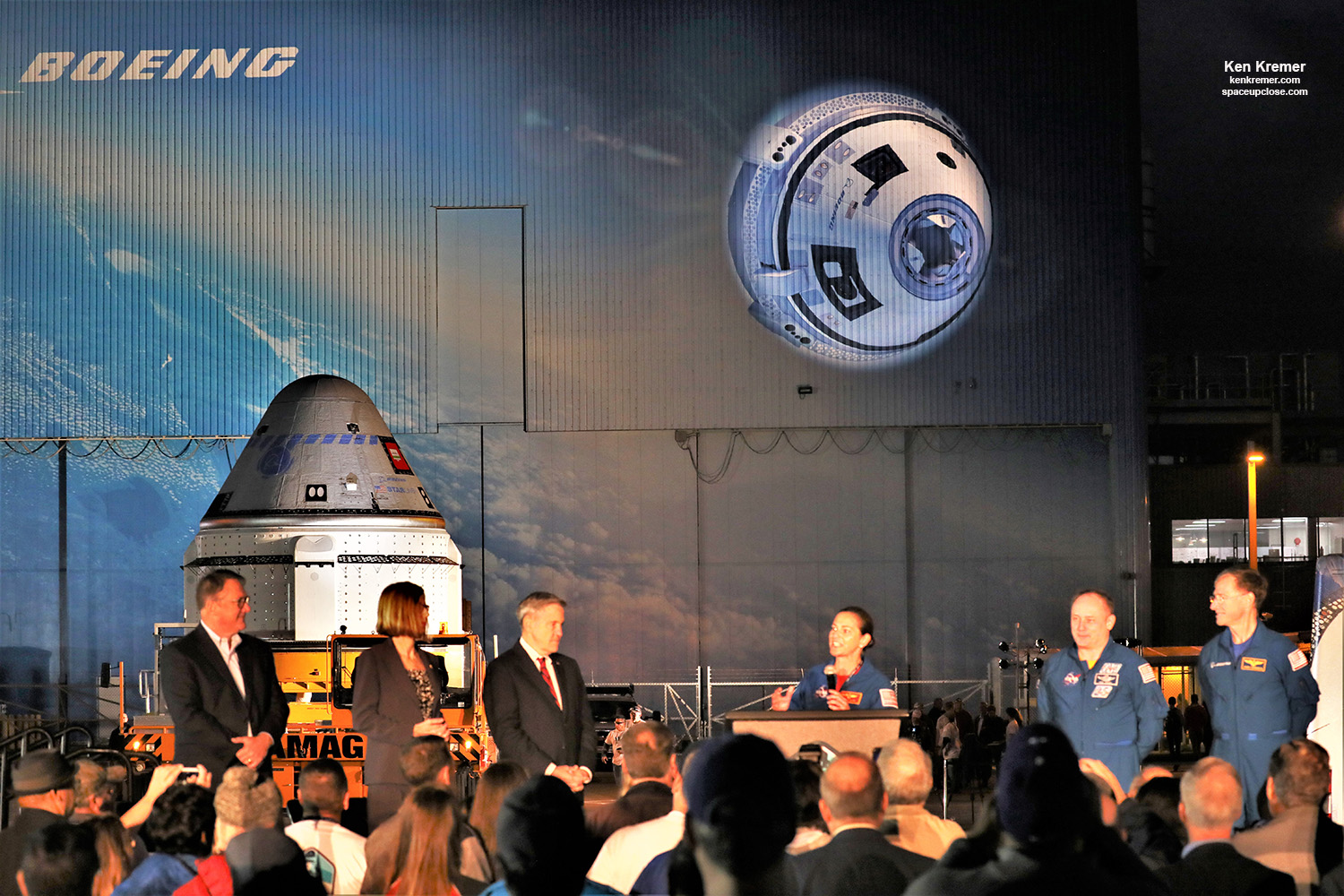
The first Starliner crew on the CFT mission comprises a trio of NASA and Boeing astronauts – namely Boeing test pilot astronaut and former NASA astronaut Chris Ferguson and NASA astronauts Mike Fincke and Nicole Mann.
Ferguson commanded the final shuttle mission STS-135 in July 2011.
Starliner’s attachment to the ULA Atlas V marks a significant milestone in the dawn of a new era in commercial human American spaceflight that will soon lead at last to the long awaited resumption of human spaceflight launches of American astronauts on American capsules and rockets from American soil – thereby ending our 100% reliance on the Russian Soyuz capsule since the forced end to NASA’s space shuttle program in 2011 by shortsighted American politicians.
Starliner, and the competing Crew Dragon spacecraft from SpaceX, were both developed with funding under NASA’s Commercial Crew Program (CCP) started nearly a decade ago.
So its been a very long haul to reach this point on the verge of blastoff.
The goal of the Commercial Crew Program is to end our 100% reliance on the Russian Soyuz capsule for launches to the ISS at a cost of more than $85 million per astronaut seat.
OFT “will provide valuable data on the end-to-end performance of the Atlas V rocket, Starliner spacecraft and ground systems, as well as in-orbit, docking and landing operations. The data will be used as part of NASA’s process of certifying Boeing’s crew transportation system for carrying astronauts to and from the space station.”
Last week another major milestone was achieved when the first fully integrated ULA Atlas V rocket and Boeing Starliner astronaut space taxi were rolled out to the pad and “successfully accomplished” the critical countdown demonstration and fueling test at Launch Pad 41 on Friday, Dec. 6.
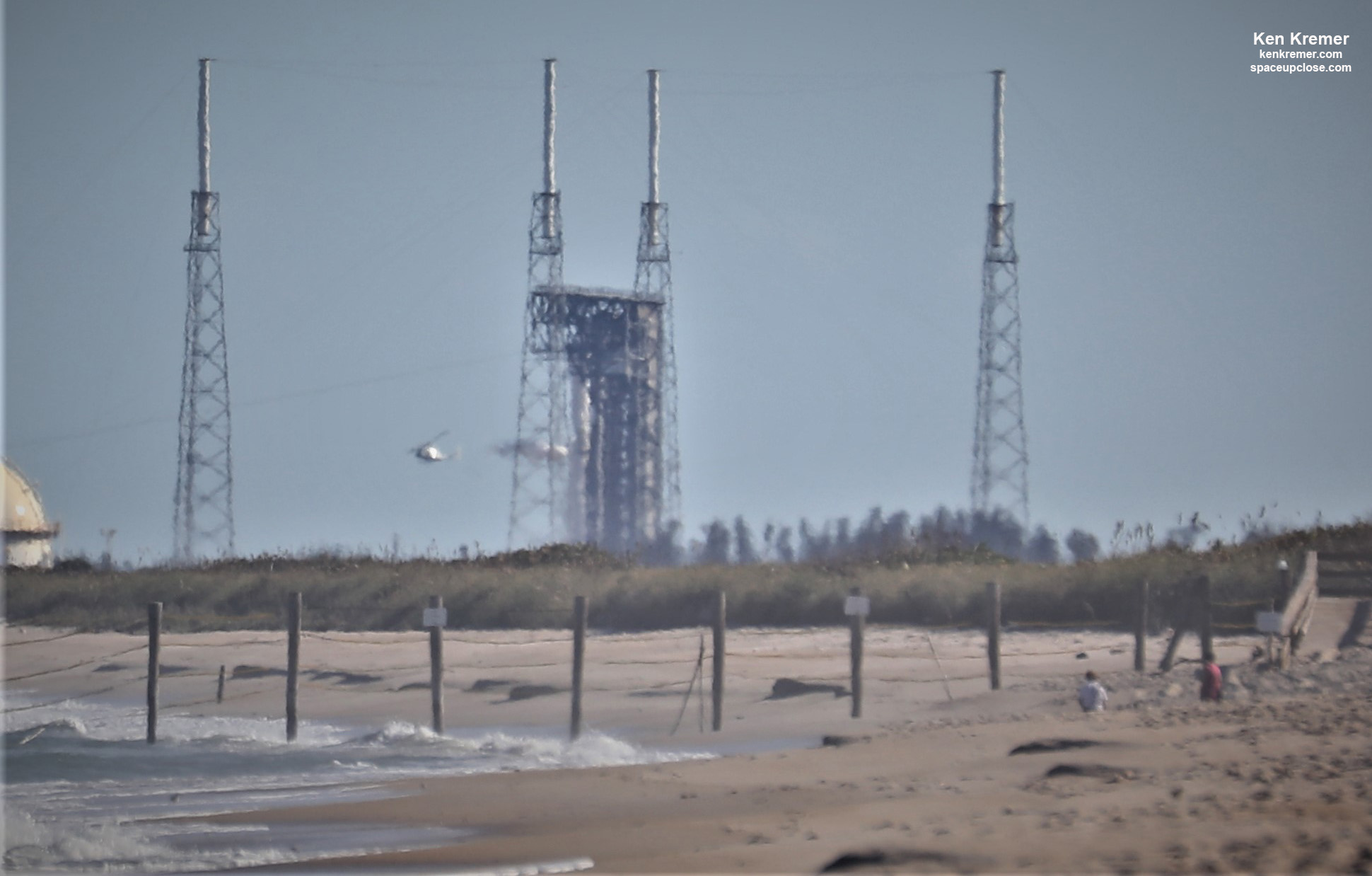
The combined NASA, ULA and Boeing space launch team worked throughout the day to carry out and complete the wet dress rehearsal (WDR) ahead of OFT.
Starliner is being manufactured in Boeing’s refurbished and repurposed Commercial Crew and Cargo Processing Facility (C3PF) – a cavernous hanger previously used to process NASA space shuttles for 3 decades at the Kennedy Space Center nearby the Vehicle Assembly Building.
You can learn more about the OFT mission at Boeing’s new mission website here:
Let’s do launch!
We are T- 7 days from #Starliner’s Orbital Flight Test to @Space_Station on Dec. 20 at 6:36 a.m. ET and we can't wait!Check out the new mission website, signup for updates and, when it's time, watch it live here: https://t.co/uY6FWdRdVr pic.twitter.com/nFHff7iocT
— Boeing Space (@BoeingSpace) December 13, 2019
The Starliner spacecraft will carry about 600 pounds of crew supplies and equipment to the space station and return some critical research samples to Earth.
Among the items is a test dummy known as ‘Rosie the Rocketeer’ outfitted with sensors to gather helpful data determining the impact of the flight effect on passengers to help the well being of future human crews.
Watch my commentary about the Boeing and SpaceX commercial crew missions and CRS-19 on ABC TV News 9 Orlando, FL.
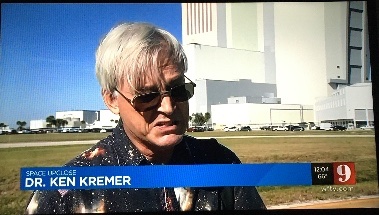
Watch Ken’s continuing reports onsite for live reporting of the upcoming Starliner OFT mission & SpaceX JCSAT launch at the Kennedy Space Center and Cape Canaveral Air Force Station.
Stay tuned here for Ken’s continuing Earth and Planetary science and human spaceflight news: www.kenkremer.com –www.spaceupclose.com – twitter @ken_kremer – email: ken at kenkremer.com
Dr. Kremer is a research scientist and journalist based in the KSC area, active in outreach and interviewed regularly on TV and radio about space topics.
………….
Ken’s photos are for sale and he is available for lectures and outreach events
Ken’s upcoming outreach events:
Dec 15/17/19: 7 PM, Quality Inn Kennedy Space Center, Titusville, FL. “Boeing Starliner Launches to ISS & SpaceX JCSAT launch.” Free. In hotel lobby. Photos for sale
